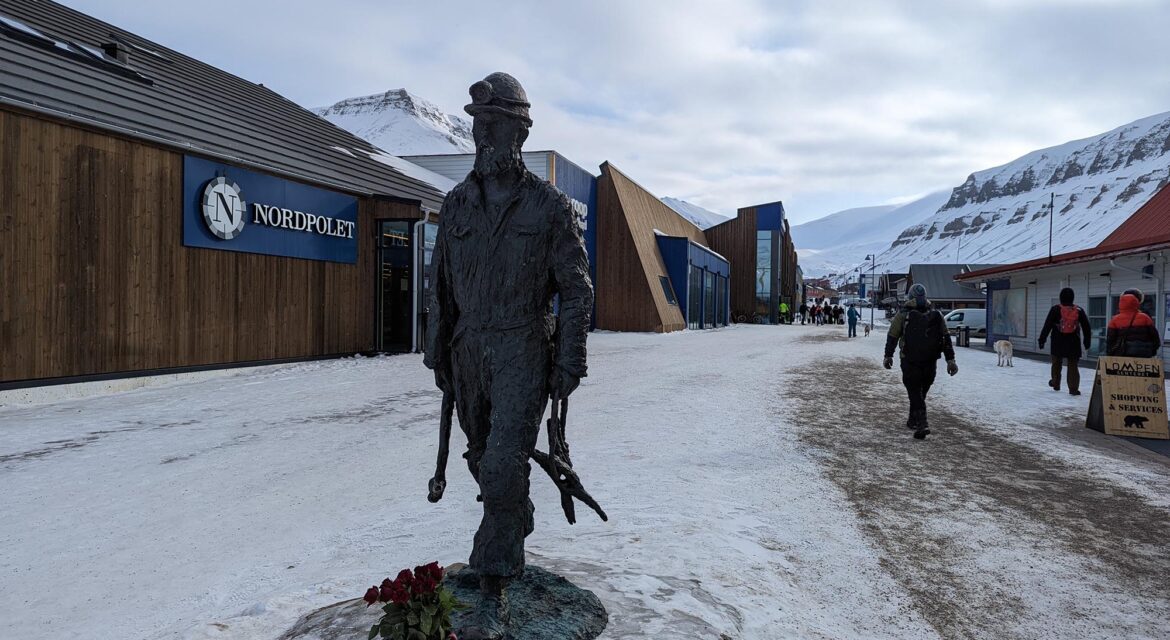 Residing in the town Longyearbyen just outside of the modern Svalbardbutikken (general store) in the center of town, The Miner statue celebrates a legacy that represents the past and present of the entire Norwegian archipelago of Svalbard. This life-sized statue depicts a miner headed to or from work for the day, enabling a variety of interpretations for audiences that will further evolve over the coming decades.
Residing in the town Longyearbyen just outside of the modern Svalbardbutikken (general store) in the center of town, The Miner statue celebrates a legacy that represents the past and present of the entire Norwegian archipelago of Svalbard. This life-sized statue depicts a miner headed to or from work for the day, enabling a variety of interpretations for audiences that will further evolve over the coming decades.
Svalbard had a long history of mining that connects all the way to the current era. Coal deposits were discovered in the late 1800s, with the first mining establishment by Norwegians set up in 1899. Mining became the lifeblood of the entire region, compelling the creation of various mining sites across the archipelago.
For many years, the only people who lived in Longyearbyen were miners. Mining remains the top industry on Svalbard, followed by tourism and research. This legacy is changing though, as there are only two remaining operational coal mines on Svalbard, further reinforcing the legacy that The Miner Depicts.

 Installed in 1999, The Miner was created by Tore Bjørn Skjølsvik, whose works can be found in museums and locations across the world. The Miner appears to be in mid-stride on his way to or from the mine, which connects to Skjølsvik’s passion for showing movement, or showing “frozen time” as Skjølsvik has called it. The piece further connects to his efforts to illustrate Norwegian people, social life and history by highlighting an essential element of the culture that has come to define Svalbard.
Installed in 1999, The Miner was created by Tore Bjørn Skjølsvik, whose works can be found in museums and locations across the world. The Miner appears to be in mid-stride on his way to or from the mine, which connects to Skjølsvik’s passion for showing movement, or showing “frozen time” as Skjølsvik has called it. The piece further connects to his efforts to illustrate Norwegian people, social life and history by highlighting an essential element of the culture that has come to define Svalbard.
Flowers and other commemorations are often left at the feet of the statue, enabling a direct connection with residents and visitors. The tradition of taking off shoes when entering a building is tied to the mining legacy of Svalbard and is still very much the custom in the present, highlighting the indirect ways that the sculpture is connected to the legacy of the region.
By connecting with a legacy that encompasses the entire history of Svalbard, The Miner sculpture has been able to “freeze” time in a way that Skjølsvik showcases in many of his pieces, allowing audiences to experience something transcendent.

